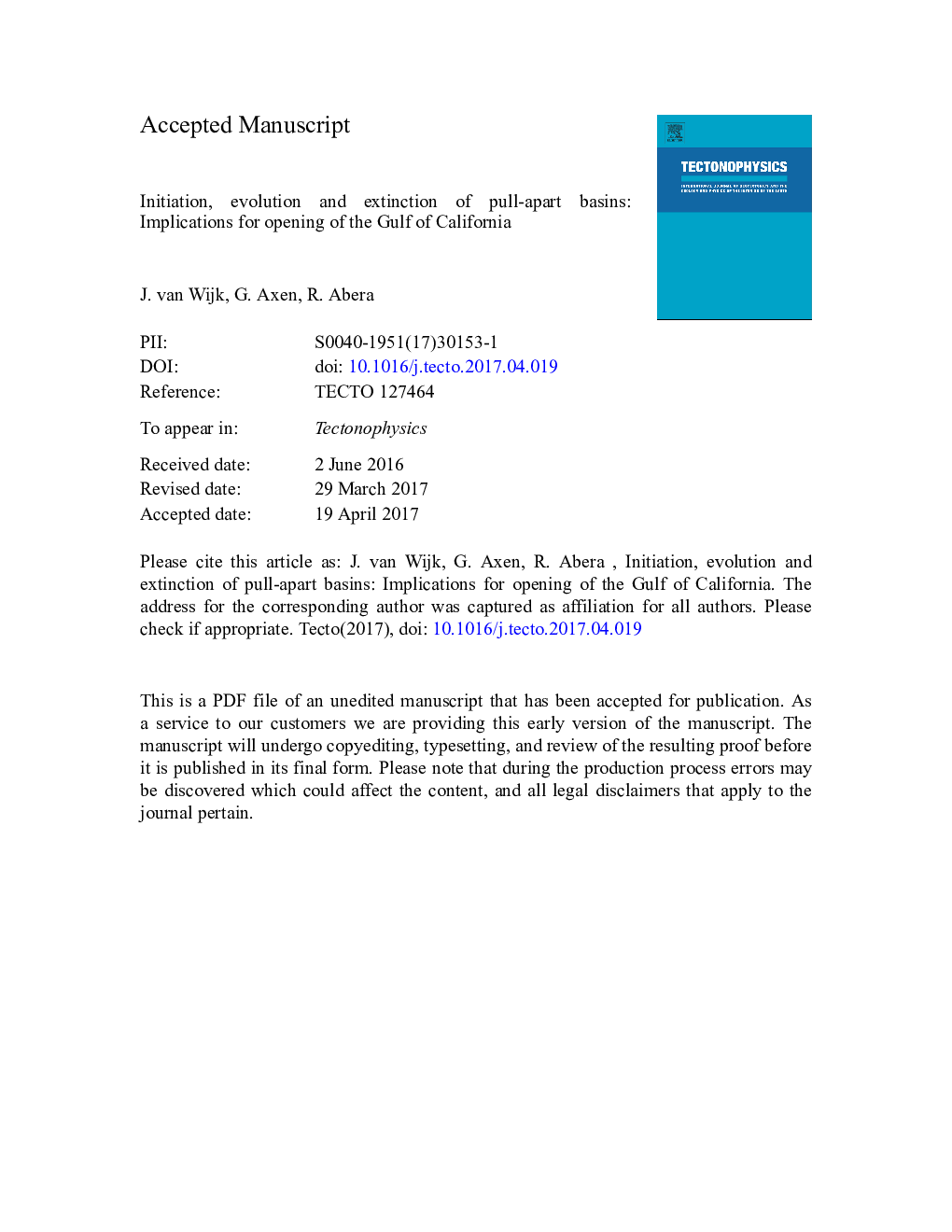| کد مقاله | کد نشریه | سال انتشار | مقاله انگلیسی | نسخه تمام متن |
|---|---|---|---|---|
| 8908852 | 1636689 | 2017 | 65 صفحه PDF | دانلود رایگان |
عنوان انگلیسی مقاله ISI
Initiation, evolution and extinction of pull-apart basins: Implications for opening of the Gulf of California
ترجمه فارسی عنوان
آغاز، تکامل و انقراض حوضچه های جدا شده: معانی برای باز شدن خلیج کالیفرنیا
دانلود مقاله + سفارش ترجمه
دانلود مقاله ISI انگلیسی
رایگان برای ایرانیان
کلمات کلیدی
خلیج کالیفرنیا، حوضه کشیدن، مدل عددی،
موضوعات مرتبط
مهندسی و علوم پایه
علوم زمین و سیارات
فرآیندهای سطح زمین
چکیده انگلیسی
We present a model for the origin, crustal architecture, and evolution of pull-apart basins. The model is based on results of three-dimensional upper crustal elastic models of deformation, field observations, and fault theory, and is generally applicable to basin-scale features, but predicts some intra-basin structural features. Geometric differences between pull-apart basins are inherited from the initial geometry of the strike-slip fault step-over, which results from the forming phase of the strike-slip fault system. As strike-slip motion accumulates, pull-apart basins are stationary with respect to underlying basement, and the fault tips propagate beyond the rift basin, increasing the distance between the fault tips and pull-apart basin center. Because uplift is concentrated near the fault tips, the sediment source areas may rejuvenate and migrate over time. Rift flank uplift results from compression along the flank of the basin. With increasing strike-slip movement the basins deepen and lengthen. Field studies predict that pull-apart basins become extinct when an active basin-crossing fault forms; this is the most likely fate of pull-apart basins, because basin-bounding strike-slip systems tend to straighten and connect as they evolve. The models show that larger length-to-width ratios with overlapping faults are least likely to form basin-crossing faults, and pull-apart basins with this geometry are thus most likely to progress to continental rupture. In the Gulf of California, larger length-to-width ratios are found in the southern Gulf, which is the region where continental breakup occurred rapidly. The initial geometry in the northern Gulf of California and Salton Trough at ~Â 6Â Ma may have been one of widely-spaced master strike-slip faults (lower length-to-width ratios), which our models suggest inhibits continental breakup and favors straightening of the strike-slip system by formation of basin-crossing faults within the step-over, as began ~Â 1.2Â Ma when the San Jacinto and Elsinore - Cerro Prieto fault systems formed.
ناشر
Database: Elsevier - ScienceDirect (ساینس دایرکت)
Journal: Tectonophysics - Volumes 719â720, 13 November 2017, Pages 37-50
Journal: Tectonophysics - Volumes 719â720, 13 November 2017, Pages 37-50
نویسندگان
J. van Wijk, G. Axen, R. Abera,
